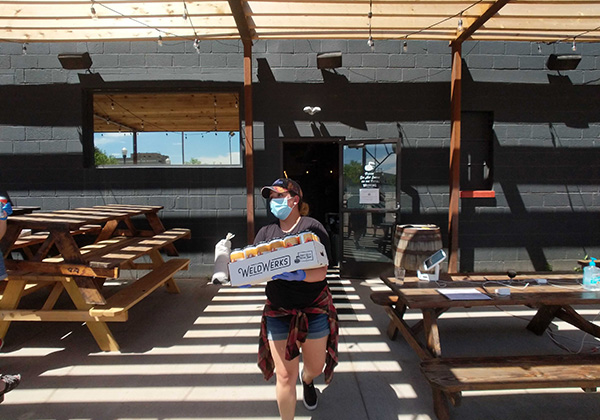
Hiring the right people has always been one of the most critical challenges for breweries, where small teams, shared responsibilities, and a culture rooted in community can make or break success. But for many brewery leaders, the same culture they are proud to protect can also create blind spots when it comes to hiring.
The language of “culture fit,” often cited as a way to maintain harmony among employees, can unintentionally exclude qualified candidates and perpetuate bias in ways that harm long-term growth.
Dr. Laurie Cure, Ph.D., has spent more than 30 years working with executives and organizations to rethink how they manage people, culture, and change. As CEO of Innovative Connections, she has guided leaders through issues of talent management, organizational development, and strategic planning. Her book, Leading Without Fear, and her work with the Daniel Goleman Emotional Intelligence program emphasize how emotions, team dynamics, and leadership behaviors shape the workplace. In the craft beer industry — where businesses are often lean, entrepreneurial, and deeply tied to personal passion — Cure’s perspective can offer an opportunity for those in position to hire, take a look at refining hiring practices in ways that both safeguard their values and open doors to broader talent.
Studies have consistently shown that diverse teams are more productive and innovative. Yet breweries, particularly smaller ones, often fall into the trap of hiring people who look, think, or act like their existing team members. Cure cautions that when “culture fit” is used as the primary filter for hiring, it can result in comfort and sameness rather than growth and authenticity. Instead, she encourages brewery owners to ask: How does this person add to and enrich our culture? This reframing shifts the focus from maintaining the status quo to building a team that reflects both shared values and diverse skills, perspectives, and experiences.
Bias in hiring is rarely intentional, but it often surfaces in subtle ways. In taprooms, leaders may unconsciously favor young, extroverted bartenders who fit a certain “craft beer aesthetic.” On the production side, assumptions about physical labor can lead to overlooking women, older workers, or those without direct brewing experience — despite the fact that hospitality or logistics skills may be just as valuable. Cure told Brewer Mag that even something as simple as relying heavily on employee referrals can reinforce hiring people who mirror existing staff, narrowing the pipeline for new talent.
In small breweries especially, where every hire matters and employees juggle multiple roles, leaders often rely on instinct. While gut feeling can be useful, Cure warns that it may also mask unconscious bias.
She recommends introducing even simple structures into the process: clearly outlining required skills and values before interviewing, inviting multiple perspectives into hiring decisions, and exploring assessment tools to reduce the weight of subjective impressions. These steps, she says, don’t have to slow down the process, but they can sharpen decision-making and reduce bias.
A team built only on familiarity and comfort may feel cohesive in the short term, but it risks missing out on the innovation, problem-solving, and adaptability that come with diverse perspectives. As Cure shared with Brewer, protecting culture is about holding on to shared values, not recreating the same type of employee over and over again. By embracing alignment rather than sameness, breweries can strengthen both their workplace culture and their bottom line.
In this Brewer Mag Q&A, Cure expands on these ideas, sharing practical advice on how breweries can minimize bias in hiring while maintaining the authenticity and passion that define the industry.
BREWER: The industry often prides itself on being tight-knit and community-driven. How can breweries balance that identity with the need for diversity and broader perspectives on their teams?
CURE: The tight-knit nature of craft beer is a huge strength as customers love feeling like “regulars” and employees often feel like family. But it can become insular if every hire comes from the same circle of friends, beer clubs, or regulars at the bar. Expanding beyond that doesn’t weaken community—it strengthens it. Bringing in staff with different backgrounds can open new connections with customers, spark creative ideas for events or beer styles, and help breweries reach audiences they may not have thought about before. It is also important to consider the business and market changes impacting brewery hiring. This culture, which operates as a strength, can also be a detriment to making sound business decisions. It can lead to a sense of entitlement which needs to be balanced.
BREWER: In a labor market where breweries often struggle to find and keep good staff, what role does rethinking “fit” play in expanding the talent pool?
CURE: This is where culture is the great differentiator. Broadening the mindset about what “good staff” looks like is a great first step. Too often, “fit” is defined narrowly as “someone who already knows beer and hangs out in the industry.” By broadening that definition, breweries can tap into workers with strong hospitality, science, or logistics backgrounds who may not have brewed before but can learn quickly. When you define fit as alignment with values—like teamwork, safety, or love of customer experience—you create a much larger, more sustainable talent pool. This also means you have to expand where you look for talent. Open up your sourcing options so you can expand the pool of applicants.
BREWER: You mention productivity gains from diverse teams. What kinds of measurable improvements could a brewery realistically expect from diversifying its staff?
CURE: For breweries, diversity can show up in tangible ways. In the taproom, diverse staff may connect better with a wider customer base, which translates to stronger sales and repeat visits. In production, teams with different problem-solving approaches might reduce downtime by spotting workflow issues faster. Across the board, inclusive workplaces tend to have lower turnover, saving breweries the time and cost of constant rehiring. Even small shifts in who’s on your team can lead to real improvements in efficiency and customer loyalty.
BREWER: What practical steps can brewery owners or hiring managers take to audit whether their hiring practices are too heavily focused on “fit” over skill and potential?
CURE: Breweries can start simple: review job postings—are you asking for “must have brewery experience” when what you really need is reliability, customer service skills, or mechanical aptitude? Look at who’s applying. Are most candidates coming from your immediate beer community? If so, you may be unintentionally limiting your reach. Ask new hires how they found the job and whether the process felt welcoming. Even small changes, like advertising outside of beer-specific forums or rewriting job ads in more inclusive language, can broaden your pipeline.
BREWER: If you were consulting with a brewery today, what’s the first change you’d recommend they make in their hiring process to reduce exclusion and bias?
CURE: The first step I’d recommend is revising job postings and interview practices. In breweries, postings often lean heavily on insider language that signals “this is only for people already in the beer world.” Instead, describe the actual skills you need—teamwork, attention to detail, ability to learn brewing processes. Pair that with structured interview questions, so every candidate—whether they’ve homebrewed for years or are coming from a restaurant—gets a fair and consistent evaluation. That one shift can immediately reduce exclusion and bias. The interview process also needs to allow for all types of candidates to showcase who they are in a way that allows current team members to see their personality.






Be the first to comment